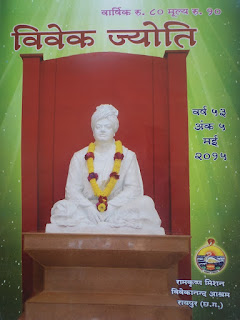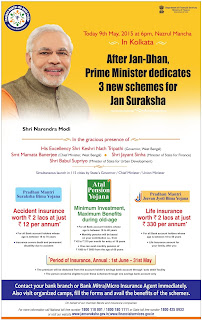I was reading about the Third
Battle of Panipat which was fought between India's Maratha empire Vs
Afghanistan's Ahmad Shah Abdali's alliance with Rohilla Afghans and Nawab of
Awadh in 1761.
The original reason behind the
battle was Ahmad Shah Abdali (Durrani)'s invasions in Punjab region. At that time Marathas
ruled over most of India and under leadership of Sadashivrao Bhau they had just
finished their victory over Nizam of Hyderabad. Abdali had been invading India;
and Marathas thought to end the matter forever. In 1758, the Marathas had
occupied Lahore and evicted Timur, the son of Abdali and hence Abdali also
sought revenge. Also, Shah Waliullah, an Islamic scholar of Delhi invited
Abdali and asked all Muslim forces to unite to destroy dominance of Maratha's
Hindu empire. Since Abdali was promised a grand alliance, he raised an army
from Afghan tribes and started for Delhi.
Marathas had started their
travel from Maharashtra in March 1760 and reached Delhi on 1 August 1760,
taking the city on the same day. They had bigger army than their opponents. But
Abdali+ forces cut Marathas supply lines and Marathas were surrounded from all
sides without food and supplies reaching them. In the end when soldiers started
to die with starvation, they declared attack on the opponents. Even with
initial military successes, as the war continued for some time, Maratha
soldiers started falling with exhaustion.
Marathas were led by Sadashivrao
Bhau, nephew of Peshwa Baji Rao I, as commander-in-chief, who died fighting
till last breath. At death, he was only 31 years old. Vishwasrao, the eldest
son of the Nanasaheb Peshwa was heir to the title of Peshwa and also
participated in the war. During the war unfortunately a stray cannon shell hit
him in the head and hence he died. He is said to be extremely handsome and at
the time of sacrifice he was only 19 years old! When Bhau saw Vishwasrao gone,
he got down from the elephant and started fighting on a horse with a great
force; but the Afghans started shouting that Bhau had fallen, and when Maratha
soldiers saw the elephant with missing Bhau on its top, they panicked. After
the battle both their bodies were recovered and cremated according to Hindu
rituals.
An interesting side of the war
was the manner in which alliances were made or not made.
Marathas tried to take Nawab of
Awadh as ally, since Marathas had protected the Nawab many times in the past.
But Nawab Shuja-ud-Daulah of Awadh
ultimately chose to join the Afghans as their Muslim army was being called
"Army of Islam". Rohillas
were of course Afghans by race and hence joined Abdali. Abdali had come to
India at invitation of Shah Waliullah
of Delhi who had called for all Muslims support for him.
Rajputs did not
join Marathas because they were angry at them for taxing them heavily and
interfering in internal matters. Raja
Suraj Mal, the Jat ruler of Bharatpur joined Maratha forces but left midway
due to conflicts in opinions. Sikhs
also did not support the Marathas because of their own regional aspirations. To
some extent Marathas were over-confident; but there were reasons for that since
their army was many times more than Afghans. But they depended on others for
their food and supplies and this is where not having alliances hurt. It is
interesting that Sikhs did not support Maratha forces against Abdali, when
Abdali had made his forces attack the Golden Temple in the past. I think Sikhs
and others, even if not supporting Maratha forces should have at least helped
them with food and supplies. But there were reports that Marathas had decided
to punish them after defeating the Afghans and hence they did not share mutual
trust.
What happened to those who did
not support Marathas during third battle of Panipat?
Sikhs: After
winning the battle of Panipat against Marathas, Abdali turned to Sikhs again
and resorted to a big holocaust where thousands of Sikhs were killed within 2
days (February 5 & 6, 1762). Abdali sacked Golden Temple, filled the sacred
pond with slaughtered cows and soil. Sikhs had to rebuild and clean the water
tank. Abdali was furious with Sikhs because whenever he invaded India and
returned to Afghanistan, Sikhs attacked their caravan and looted money and
freed prisoners. Sikh forces had also attacked and looted Abdali's forces when
they were returning to Afghanistan after winning against Marathas!
Jat
Raja Suraj Mal: He initially gained for not joining Marathas -
as he gained immense power in the North after Abdali returned to Afghanistan.
However he soon found himself amidst several conflicts and he himself was
killed in battle against Najib-ud-Daula just in 1763.
Shuja-ud-Daulah,
Nawab of Awadh: Later on he regretted joining Abdali as his Shia
forces got into clashes with the orthodox Sunni Afghans. He is said to have sent
secret letters to Peshwa repenting. His forces had played crucial role in
cutting off Marathas' supply lines even when in the past Marathas had helped
save his father from his Afghan enemies. He died in 1775.
Rohilla
Afghans: After the war they gained many regions. But after death of
Najib Khan in 1770, the Rohillas were defeated by the British.
Shah
Waliullah, Islamic scholar of Delhi: He died in 1762; ironically
only a year after the famous battle he called for.
It is said that if the Marathas
did not lose this battle, the British won't have gained power in India so soon.
After losing the battle,
Marathas witnessed a resurrection which is called 'Maratha Resurrection'.
Within 10 years’ time, the Marathas returned to Delhi under leadership of
Peshwa Madhavrao I in 1771 and restored their power in North India. This revenge
was the ultimate climax in the events related to the third battle of Panipat.
- Rahul










